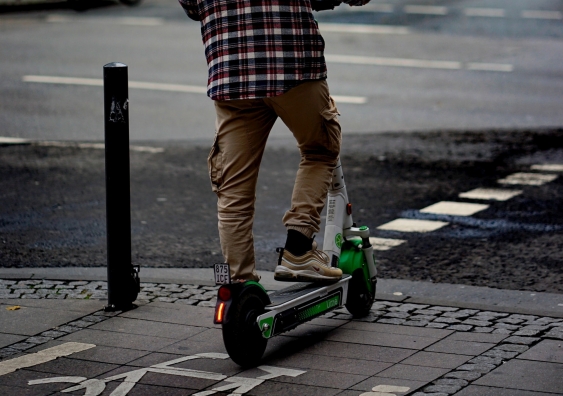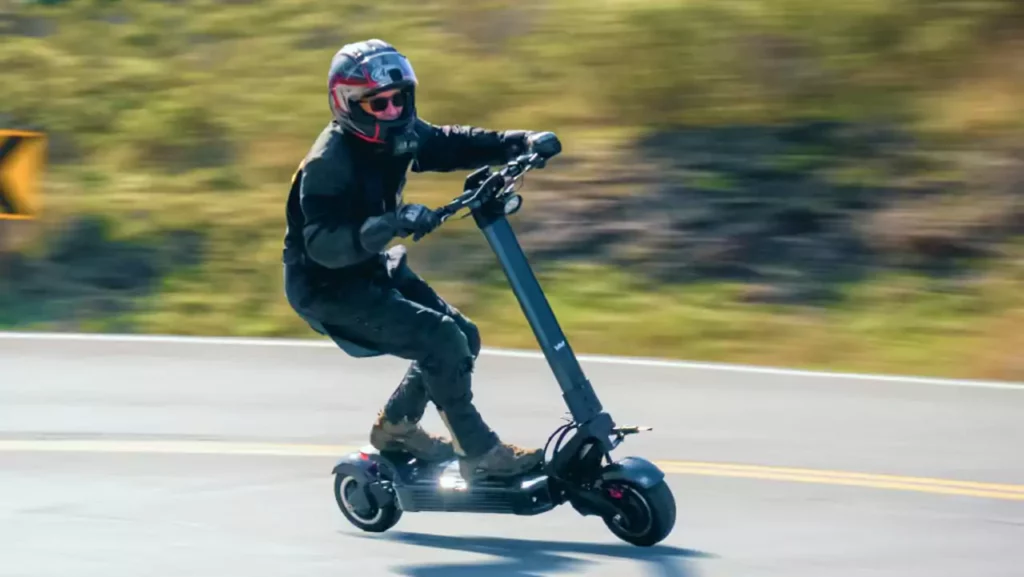There are many reasons why people buy an e-scooter; it’s an effective way to get where you want to go quickly and comfortably.
But you must’ve heard about another major draw: e-scooters are environmentally friendly. In fact, some brands use this feature as the primary selling point.
That begs the question: How eco-friendly are e-scooters, and, more importantly, how do they affect the environment?
If you’ve been also thinking the same, you’re at the right place.
In this blog, we’ll explore the impact of e-scooters on the climate.
The Green Side of E-Scooters
- Lowered Carbon Emissions
One of the significant advantages of e-scooters is that they can help reduce carbon emissions. This is especially true if you live in an urban area.
Compared to traditional modes of transport—mainly gasoline-powered vehicles—e-scooters are far more energy-efficient, producing little to no emissions.
Let’s take a closer look at the difference.
A typical e-scooter generates power using electricity, while a car runs on fossil fuels; the emissions from electricity generation can be significantly lower than those of a car.
Another important point is that people usually use e-scooters for short journeys. The same journey in a car is more carbon-intensive.
- Reduced Traffic Congestion
Even in the world’s most advanced cities, traffic congestion is a prevalent problem. Not only does one waste time during this, but it also leads to increased emissions.
However, an e-scooter is the perfect way to alleviate traffic congestion. The more people use e-scooters, the fewer cars will be on the road.
Consequently, the amount of fuel people waste in cars and pollution levels are decreased.
Since e-scooters are compact, they can bypass traffic while also reducing the need for parking spaces, which is another pain point for daily commuters.
- Better Transport Option
Shared e-scooter programs significantly contribute to reducing carbon emissions.
By offering a convenient, eco-friendly transportation option, these programs help decrease reliance on personal vehicles, which are major contributors to urban air pollution and greenhouse gas emissions.
The shared nature of these e-scooters means fewer resources are used in production compared to each individual owning one, leading to lower overall environmental impact.
Additionally, integrating e-scooters with public transportation can reduce the carbon footprint of commuting, especially for short trips that might otherwise involve fuel-powered vehicles.
Since we’re a bias-free blog website, we’ll also list the negative impact of e-scooters on the environment. While the positive outweighs the negative, it’s worth considering either way.
The Not-So-Green Side of E-Scooters
- Production and Manufacturing Emissions
The environmental impact of e-scooters begins long before they hit the streets.
Manufacturing e-scooters, especially the lithium-ion batteries that power them, requires energy-intensive processes that contribute to carbon emissions.
Mining for the raw materials used in these batteries, such as lithium, cobalt, and nickel, can also have significant environmental consequences, including habitat destruction and water pollution in mining regions.
Moreover, e-scooters are typically made of metal, plastic, and other materials that require extraction, manufacturing, and transportation.
These activities generate emissions and environmental waste, which can diminish the product’s overall sustainability.
The process of creating an e-scooter contributes to a carbon footprint even before the device is used for transportation.
- Battery Disposal and E-Waste
Another concern with e-scooters is battery disposal. Lithium-ion batteries have a limited lifespan, and as e-scooters are used and eventually discarded, the waste from these batteries can become a major environmental challenge.
If these batteries are not disposed of properly, they can leak toxic substances like heavy metals into the environment, posing a risk to soil and water quality.
E-waste, in general, is a growing issue, and e-scooters contribute to this problem.
While some manufacturers and cities are working on proper recycling programs for e-scooters, many scooters are not properly disposed of, contributing to pollution and environmental harm.
Ensuring proper recycling programs and reducing the waste associated with old batteries should be a priority for the industry moving forward.
- Short Life Span and High Turnover Rates
E-scooters, particularly those used in sharing schemes, often have a relatively short life span.
The heavy usage, exposure to weather conditions, and occasional accidents lead to significant wear and tear, causing these scooters to be replaced or repaired frequently.
As a result, many e-scooters end up in landfills before their components can be fully recycled or reused.
The turnover rates of e-scooter fleets are quite high, which results in more units being manufactured and ultimately discarded, increasing the overall environmental impact of these transportation systems.
Efforts to design longer-lasting, more durable e-scooters could significantly reduce this issue.
Wrapping Up
While e-scooters aren’t the perfect solution to fighting global warming, they’re definitely a step in the right direction.
From reducing carbon emissions to alleviating traffic congestion, they can make a real difference in societies, especially considering the other alternative is vehicles.
Manufacturers can enhance the eco-friendly factor by continuously improving the design and end-of-life management.



